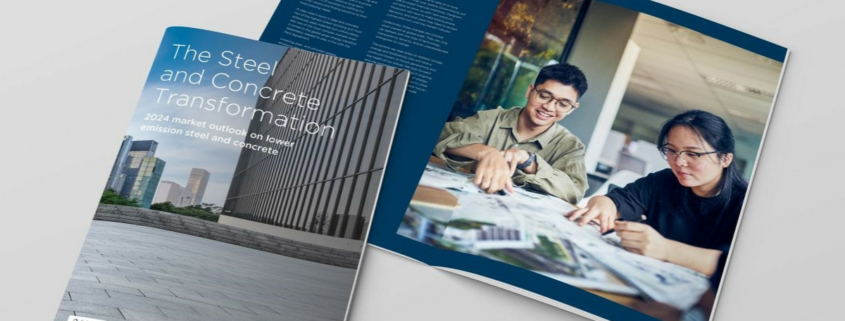Nearly Half of Global Companies are Ready to Pay a Premium for Lower Emission Steel and Concrete

A new report released by Climate Group and Ramboll at Climate Week NYC reveals close to 50 percent of global businesses that were surveyed for the research are prepared to pay a premium for lower-emission steel and concrete, signalling a powerful and growing demand for more sustainable materials. With steel and concrete emissions responsible for 15 percent of global emissions, their urgent decarbonisation is critical to meeting the goals outlined in the Paris Agreement.
The Steel and Concrete Transformation: 2024 market outlook on lower emission steel and concrete report, comes after over 250 companies globally from 42 countries and 21 industries were surveyed on their current readiness to use and willingness to pay for lower emission steel and concrete. It aims to evaluate business readiness to incorporate lower-emission steel and concrete in their operations, their willingness to pay a premium for these materials, and the existing key barriers preventing wider adoption.
Positive Market Outlook but Barriers Remain
The research indicates growing momentum, with 45 percent of respondents saying they would be willing to pay a premium for emissions reductions of 25 percent or higher for steel, while 57 percent would be willing to do so for reductions exceeding 50 percent. For concrete, these numbers were 40 percent and 49 percent respectively. While the ability to pay varies across sectors and geographies, 52 percent of respondents had a higher willingness to do so when compared to their stance one year ago, while 34 percent reported no change in opinion.
The report highlights that businesses expect the transition towards lower-emission materials to be inevitable. Driven by both regulatory pressures and market demand, 78 percent of respondents answered they expect lower-emission steel and concrete will be standard materials for new products or projects within the next decade.
While the outlook is broadly positive, the report also focused on the barriers and solutions to this widescale adoption and transition. Businesses said while progress is accelerating, the greatest barriers to adoption remain cost (84 percent), industry conservatism (37 percent), and lack of knowledge (33 percent).
In terms of solutions, businesses were clear that governments have a significant role to play in supporting them. Financial levers such as tax incentives, credits, and subsidies (69 percent), carbon pricing (50 percent) as well as minimum product standards or embodied carbon limits (43 percent) were identified as crucial policies for governments to prioritise. Without them, the world is unlikely to see the rapid scaling of lower-emission steel and concrete in time. Clear and robust policies must be implemented at all levels of government, now.
Jen Carson, Head of Industry at Climate Group, said, “Business leaders are not only calling for change – they’re enacting it. This report is a real temperature check of the market. It’s hugely encouraging to see the appetite is here, now, for organisations to pay a premium for lower-emission steel and concrete. Actors across the value chain – suppliers, governments, and investors – should take note.
But there’s deep work to be done to speed up progress. It’s critical that businesses can make the right choices for their operations, and the planet, and switch to lower-emission steel and concrete. Governments must listen to their concerns, support their ambition, and act quickly to remove barriers. This way, we can unlock corporate demand to drive real sector transformation.”
Michael Simmelsgaard, Chief Operating Officer at Ramboll, said, “The fact that more companies are now willing to pay a premium for lower emission steel and concrete sends a strong signal to the market. To accelerate progress, all actors now need to come together – from policymakers and investors to off-takers of steel and concrete, as well as end users who will need to accept a price premium until the market matures. Let’s build on the momentum we have to drive a rapid and lasting decarbonisation of heavy industries on the path to global net zero.”




